Main Page Explore WikispeciesDistinguished authorSpecies of the monthEndangered species of the monthWikispecies in other languagesNavigation menu@WikispeciesAndroid appconnectZooKeysPhytoKeys
Wikispecies
AnimaliaPlantaeFungiBacteriaArchaeaProtista@WikispeciesAndroid app#wikispeciesZooKeysPhytoKeysWikimedia CommonsDarwinJean-Baptiste LamarckÉtienne Geoffroy Saint-Hilaire
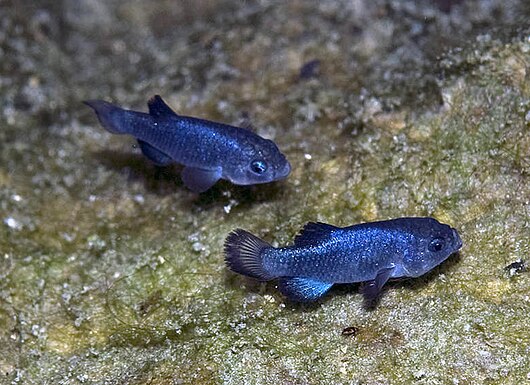
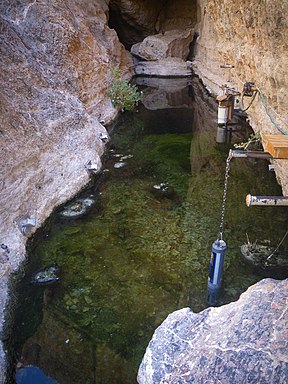 BacillariophyceaetubulariansJoseph H. WalesالعربيةئۇيغۇرچەAfrikaansAlemannischAragonésঅসমীয়াAsturianuAzərbaycancaBahasa IndonesiaBahasa MelayuبلوچیБългарскиবাংলাБеларускаяBoarischBosanskiBrezhonegCatalàČeštinaCymraegDanskDeutschEestiΕλληνικάEnglishÆngliscEspañolEsperantoEuskaraفارسیFøroysktFrançaisGalegoქართული廣東話한국어ՀայերենHrvatskiInterlinguaÍslenskaItalianoעבריתहिन्दीқазақшаКыргызчаMagyarMirandésМакедонскиमराठीмолдовеняскэNederlandsनेपाली日本語NordfriiskNorsk bokmålНохчийнଓଡ଼ିଆOccitanPolskiPortuguêsRipoarisch/KölschRomânăRuna SimiРусскийScotsShqipසිංහලSicilianuSimple EnglishSlovenčinaSlovenščinaСрпски/SrpskiSundaSuomiSvenskaTagalogТоҷикӣதமிழ்ไทยTiếng ViệtTürkçeУкраїнськаVenetoVolapükייִדישZazaki简体中文正體中文Wikimedia Foundationmultilingualfree-content
BacillariophyceaetubulariansJoseph H. WalesالعربيةئۇيغۇرچەAfrikaansAlemannischAragonésঅসমীয়াAsturianuAzərbaycancaBahasa IndonesiaBahasa MelayuبلوچیБългарскиবাংলাБеларускаяBoarischBosanskiBrezhonegCatalàČeštinaCymraegDanskDeutschEestiΕλληνικάEnglishÆngliscEspañolEsperantoEuskaraفارسیFøroysktFrançaisGalegoქართული廣東話한국어ՀայերենHrvatskiInterlinguaÍslenskaItalianoעבריתहिन्दीқазақшаКыргызчаMagyarMirandésМакедонскиमराठीмолдовеняскэNederlandsनेपाली日本語NordfriiskNorsk bokmålНохчийнଓଡ଼ିଆOccitanPolskiPortuguêsRipoarisch/KölschRomânăRuna SimiРусскийScotsShqipසිංහලSicilianuSimple EnglishSlovenčinaSlovenščinaСрпски/SrpskiSundaSuomiSvenskaTagalogТоҷикӣதமிழ்ไทยTiếng ViệtTürkçeУкраїнськаVenetoVolapükייִדישZazaki简体中文正體中文Wikimedia Foundationmultilingualfree-content
(function()var node=document.getElementById("mw-dismissablenotice-anonplace");if(node)node.outerHTML="u003Cdiv class="mw-dismissable-notice"u003Eu003Cdiv class="mw-dismissable-notice-close"u003E[u003Ca tabindex="0" role="button"u003Edismissu003C/au003E]u003C/divu003Eu003Cdiv class="mw-dismissable-notice-body"u003Eu003Cdiv id="localNotice" lang="en" dir="ltr"u003Eu003Ctable style="border: 1px solid #009966;" align="center" width="100%"u003Enu003Ctbodyu003Eu003Ctru003Enu003Cth style="background-color:u0026#32;; text-align: center"u003Eu003Cfont color="#006699" size="3"u003Eu003Cbu003ETranslationu003C/bu003Eu003C/fontu003Eu003Cbr /u003Eu003Cfont color="black" size="2"u003EWikispecies needs translators to make it more accessible. More info on u003Ca href="/wiki/Special:MyLanguage/Help:Translation" title="Special:MyLanguage/Help:Translation"u003Ethis pageu003C/au003E.u003C/fontu003Enu003C/thu003Eu003C/tru003Eu003C/tbodyu003Eu003C/tableu003Eu003C/divu003Eu003C/divu003Eu003C/divu003E";());
Main Page
Jump to navigation
Jump to search
Welcome to Wikispecies The free species directory that anyone can edit. It covers Animalia, Plantae, Fungi, Bacteria, Archaea, Protista and all other forms of life. So far we have 674,045 articles Wikispecies is free, because life is in the public domain! You can also check us out on Twitter: @Wikispecies We also have an IRC Channel #wikispeciesconnect | Taxon Navigation
|
 |  |  | 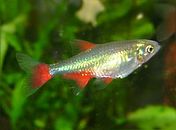 |
Haloquadratum walsbyi | Sitta europaea caesia | Caloboletus calopus | ♂Aphyocharax anisitsi |
 |  | 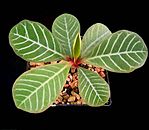 |  Play media Play media |
| ♀Brachypelma smithi | Hippopotamus amphibius | Euphorbia leuconeura | Sarcophaga sp. with Tipulidae |
Explore Wikispecies
Collaboration with ZooKeys A collaboration between Wikispecies and ZooKeys has been announced. PhytoKeys also joined the collaboration in November 2010. Images of species from ZooKeys and PhytoKeys will be uploaded to Wikimedia Commons and used in Wikispecies. Distinguished author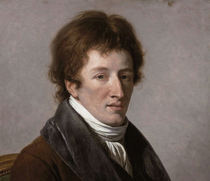 Georges Cuvier Georges Léopold Chrétien Frédéric Dagobert Cuvier (most often published simply as "Georges Cuvier") was a French naturalist and zoologist. He is sometimes referred to as the founding father of paleontology. Cuvier was a major figure in natural sciences research in the early 19th century and was instrumental in establishing the fields of comparative anatomy and paleontology through his work in comparing living animals with fossils. Cuvier's work is considered the foundation of vertebrate paleontology, and he expanded Linnaean taxonomy by grouping classes into phyla and incorporating both fossils and living species into the classification. Cuvier is also known for establishing extinction as a fact: at the time, extinction was considered by many of Cuvier's contemporaries to be merely controversial speculation. He is also remembered for strongly opposing theories of evolution, which at the time (before Darwin's theory) were mainly proposed by Jean-Baptiste Lamarck and Étienne Geoffroy Saint-Hilaire. Cuvier believed there was no evidence for evolution, but rather evidence for cyclical creations and destructions of life forms by global extinction events such as deluges (outburst flooding). Cuvier wrote hundreds of scientific papers and books. His most famous work is Le Règne Animal (1816–1817, four tomes; English title The Animal Kingdom). It sets out to describe the natural structure of the whole of the animal kingdom based on comparative anatomy, and its natural history. Cuvier divided the animals into four embranchements ("Branches", roughly corresponding to phyla), namely vertebrates, molluscs, articulated animals (arthropods and annelids), and zoophytes (cnidaria and other phyla). He is the author of thousands of new taxa, among them well over 5,000 species of fish and molluscs. In 1800 and working only from a drawing, Cuvier was the first to correctly identify in print, a fossil found in Bavaria as a small flying reptile, which he named the Ptero-Dactyle in 1809 (later Latinized as Pterodactylus antiquus). When the French Academy was preparing its first dictionary, it defined "crab" as "A small red fish which walks backwards." This definition was sent with a number of others to the naturalist Cuvier for his approval. The scientist wrote back: "Your definition, gentlemen, would be perfect, only for three exceptions. The crab is not a fish, it is not red, and it does not walk backwards." In 1819, he was created a peer for life in honour of his scientific contributions and is thereafter known as Baron Cuvier. See also: Distinguished authors of previous months. | Species of the monthCommon European Glowworm
Lampyris noctiluca (Linnaeus, 1758) Some facts about this beetle:
|
Endangered species of the monthDevils Hole Pupfish
Cyprinodon diabolis Some facts about this species: Total length: 2,3 cm (♀) 3,0 cm (♂, pictured above) Habitat: Subterraneous geothermal pools and caves with a constant water temperature of between 33.4 and 34.0 degrees Celsius. Distribution: This lively and energetic killifish is often described as the world's rarest fish. It's range is restricted to Devils Hole,(Wikipedia) a geologic limestone formation located within the Ash Meadows National Wildlife Refuge, Nevada, in the Southwestern United States. From a single opening at the surface that is approximately 1.8 by 5.5 meters wide (pictured above), Devils Hole branches into caverns and chasms at least 90 meters (300 feet) deep. Diet: Omnivore. They primarily feed on algae that grows on the limestone shelf in Devils Hole. The major food source during the winter and spring is Bacillariophyceae, while algae of the Spirogyra genus serve as the food source in the summer and fall. Academic autopsies have shown that at least some specimen of C. diabolis feed on small Tryonia snails as well as Dugesia triclads and tubularians. Predators: Cyprinodon diabolis is the largest known inhabitor of Devils Hole and does not have any predators. Surviving number: Since population surveys began, the wild population has not exceeded 553 individuals. From 1970 through 1996, the average population was 324. For reasons that are still unclear, the Devils Hole population began to decline in the mid-1990s. Since 2005, the population at Devils Hole has been below 200 individuals, although the population fluctuates depending on the season. In 2007, only between 38 and 42 fish remained in Devils Hole. In 2008, the National Park Service began to feed the pupfish a special food to attempt to restore the population. The Devils Hole pupfish count rose in the autumn of 2008 to 126, the first steady increase in more than 10 years. As of spring 2016, a periodic count found 115 of the fish living in the waters of Devils Hole. Conservation status: Critically Endangered (IUCN 3.1), assessed August 27, 2014. First described: By the U.S. ichthyologist Joseph H. Wales in Copeia, 1930 (no. 3): 61–70. |
Wikispecies in other languagesالعربية · |
Wikispecies is run by the non-profit Wikimedia Foundation, which operates several other multilingual and free-content projects:
|
Category:
- Wikispecies
(window.RLQ=window.RLQ||[]).push(function()mw.config.set("wgPageParseReport":"limitreport":"cputime":"0.092","walltime":"0.148","ppvisitednodes":"value":217,"limit":1000000,"ppgeneratednodes":"value":0,"limit":1500000,"postexpandincludesize":"value":14127,"limit":2097152,"templateargumentsize":"value":120,"limit":2097152,"expansiondepth":"value":6,"limit":40,"expensivefunctioncount":"value":0,"limit":500,"unstrip-depth":"value":0,"limit":20,"unstrip-size":"value":0,"limit":5000000,"entityaccesscount":"value":0,"limit":400,"timingprofile":["100.00% 35.409 1 -total"," 25.63% 9.074 1 Template:Especies-2019-04"," 15.45% 5.469 1 Template:Distinguished_author_2018-07"," 14.52% 5.143 1 Template:Species-2019-04"," 14.24% 5.041 1 Template:Not_a_typo"," 9.32% 3.299 1 Template:Twitter"," 9.22% 3.263 1 Template:Sisterprojects"," 9.14% 3.237 1 Template:Languages"," 7.79% 2.759 1 Template:MP_pictures"," 7.72% 2.734 1 Template:A"],"cachereport":"origin":"mw1254","timestamp":"20190430225426","ttl":3600,"transientcontent":true);mw.config.set("wgBackendResponseTime":107,"wgHostname":"mw1327"););